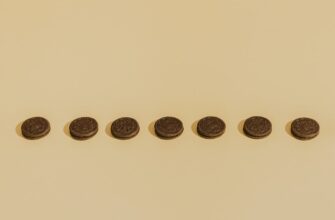- Introduction: Why Day Trade Bitcoin on a 1-Hour Chart?
- Why the 1-Hour Timeframe Works for Bitcoin Day Trading
- Setting Up Your Binance Trading Environment
- Key Indicators for 1-Hour Bitcoin Trading Strategy
- Step-by-Step Trading Process (1-Hour Timeframe)
- Critical Risk Management Rules
- Common 1-Hour Trading Mistakes to Avoid
- FAQ: Day Trading Bitcoin on Binance (1-Hour Timeframe)
- Final Thoughts
Introduction: Why Day Trade Bitcoin on a 1-Hour Chart?
Day trading Bitcoin on Binance using a 1-hour timeframe strikes the perfect balance between capturing meaningful trends and avoiding market noise. This approach gives you 24 potential entry points daily while filtering out minor fluctuations that plague shorter timeframes. Binance, with its high liquidity and advanced charting tools, is ideal for executing this strategy efficiently. In this 900-word tutorial, you’ll learn a systematic approach to profit from Bitcoin’s volatility without staring at screens all day.
Why the 1-Hour Timeframe Works for Bitcoin Day Trading
The 1-hour chart (1H) offers distinct advantages for crypto traders:
- Reduced Noise: Smoothes out erratic 5 or 15-minute price jumps
- Clearer Trends: Identifies sustained momentum more reliably
- Time Efficiency: Requires only 3-4 check-ins daily for active management
- High Probability Setups: Technical patterns (like breakouts) validate better on 1H charts
- Compatibility: Aligns perfectly with 4-hour and daily trend analysis
Setting Up Your Binance Trading Environment
Optimize your workspace before trading:
- Account Setup: Complete KYC verification on Binance for higher withdrawal limits
- Chart Configuration: In TradingView (integrated with Binance), set chart to 1H and add:
- Candlestick display
- Volume bars
- EMA (Exponential Moving Average) ribbons: 9, 21, 50 periods
- Risk Parameters:
- Never risk >1% of capital per trade
- Set stop-loss orders on every position
- Enable 2FA for security
Key Indicators for 1-Hour Bitcoin Trading Strategy
Combine these tools for high-confidence signals:
- EMA Ribbon: 9-EMA (short-term), 21-EMA (medium), 50-EMA (long-term). Enter trades when all align directionally.
- RSI (14-period): Identify overbought (>70) or oversold (<30) conditions. Divergences signal reversals.
- Volume Spikes: Confirm breakouts with volume >20% above 50-period average.
- Support/Resistance Levels: Draw horizontal lines at key price zones tested at least 3 times historically.
Step-by-Step Trading Process (1-Hour Timeframe)
- Trend Identification (5 mins): Check if 9-EMA > 21-EMA > 50-EMA for uptrend (reverse for downtrend). Trade only with the trend.
- Entry Signal (Confirm with 2 factors):
- Breakout above resistance with volume spike OR
- RSI divergence + candle close beyond EMA ribbon
- Position Sizing: Calculate 1% risk capital. If stop loss is $200 away, position = (1% account) / $200
- Place Orders: Limit order at entry point. Stop loss 1-2% below support (long) or above resistance (short). Take profit at 2:1 risk-reward ratio.
- Monitor & Adjust: Check charts every 1-2 hours. Move stop to breakeven when price reaches 50% profit target.
Critical Risk Management Rules
- Stop Loss Discipline: Never widen stops emotionally. Use hard stops only.
- Volatility Filter: Avoid trading during major news events (e.g., CPI reports, Fed announcements)
- Daily Loss Limit: Stop trading after 3% account loss in 24 hours
- Weekend Protection: Close positions before Friday market close to avoid gap risks
Common 1-Hour Trading Mistakes to Avoid
- Overtrading – wait for A+ setups only
- Ignoring higher timeframes (always check 4H/daily trend)
- Chasing pumps without volume confirmation
- Using leverage >5x on Bitcoin (increases liquidation risk)
- Letting emotions override stop losses
FAQ: Day Trading Bitcoin on Binance (1-Hour Timeframe)
Q: How much capital do I need to start?
A: Minimum $500 recommended to properly implement risk management, though Binance allows trading with less.
Q: Can I automate this strategy?
A: Yes! Use Binance’s API with TradingView alerts for semi-automation, but manual oversight is crucial.
Q: What’s the optimal trading session?
A> Focus on London/New York overlap (12:00-16:00 UTC) when Bitcoin volatility peaks.
Q: How many trades per day should I make?
A: 1-3 high-quality setups maximum. Quality over quantity.
Q: Which Bitcoin pair is best?
A> BTC/USDT offers the tightest spreads and highest liquidity on Binance.
Q: Do I need tax documentation?
A> Yes – Binance provides trade history exports. Consult a crypto tax specialist.
Final Thoughts
Mastering 1-hour Bitcoin day trading on Binance requires discipline, but the framework above gives you an edge. Backtest this strategy using Binance’s historical data for 3 months before live trading. Remember: consistency beats home runs. Stick to your rules, manage risk ruthlessly, and gradually scale as you gain confidence in reading price action. The 1H chart is your runway – learn its rhythms, and you’ll turn volatility into opportunity.








